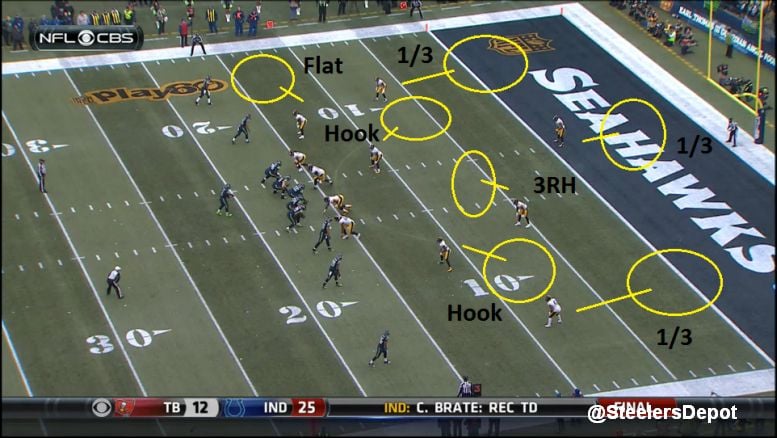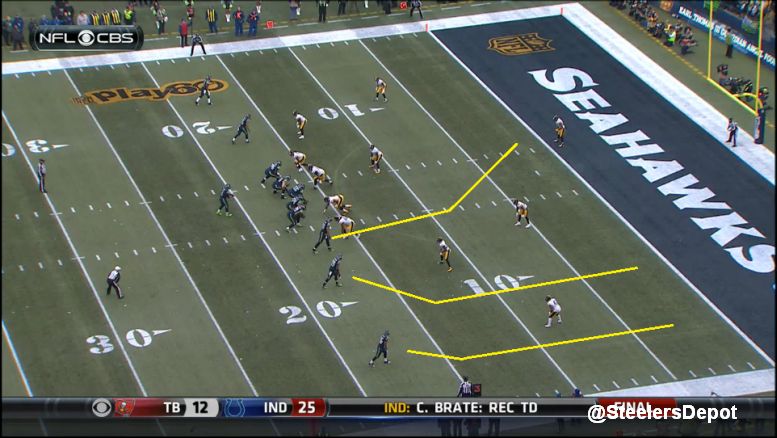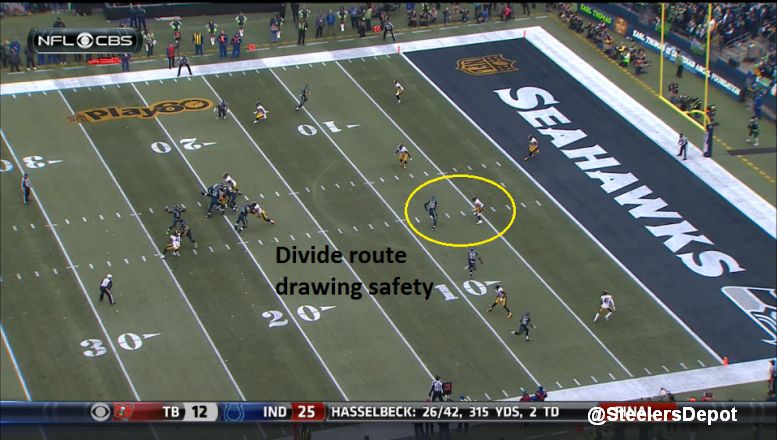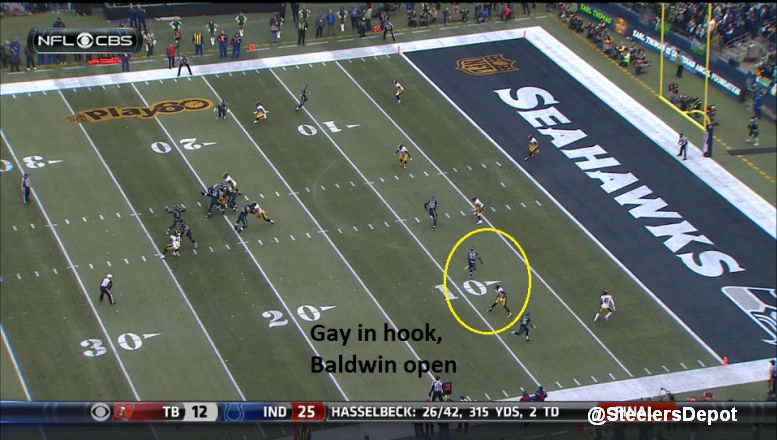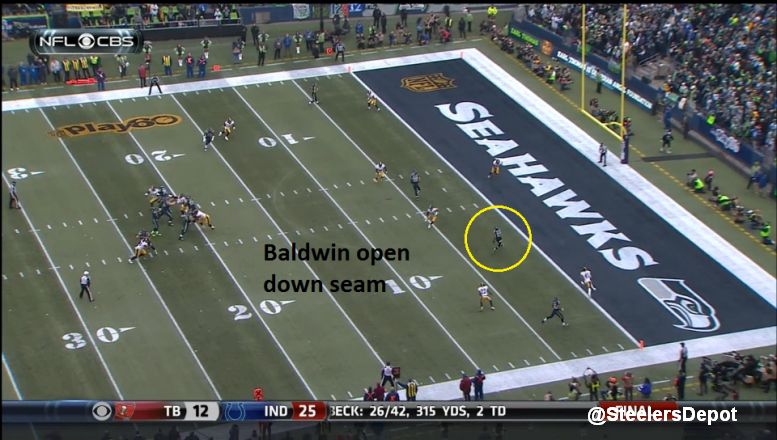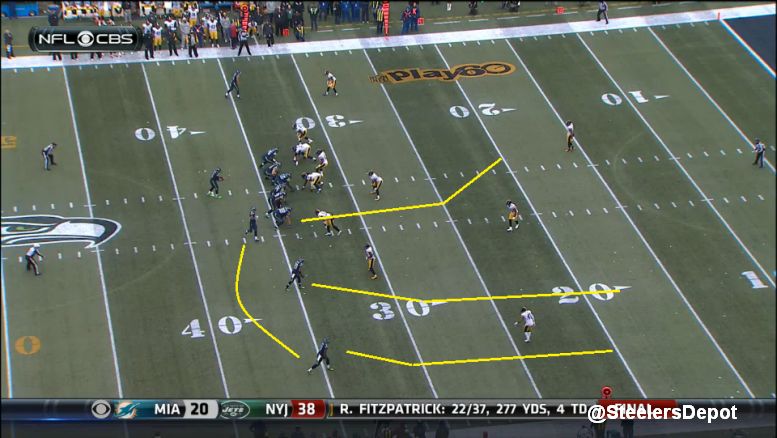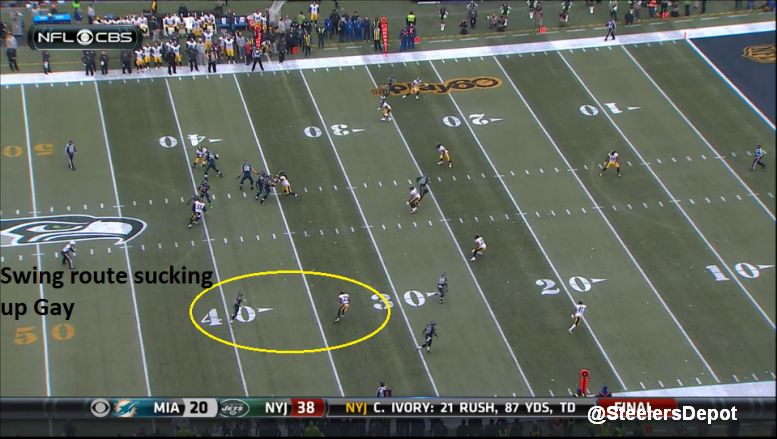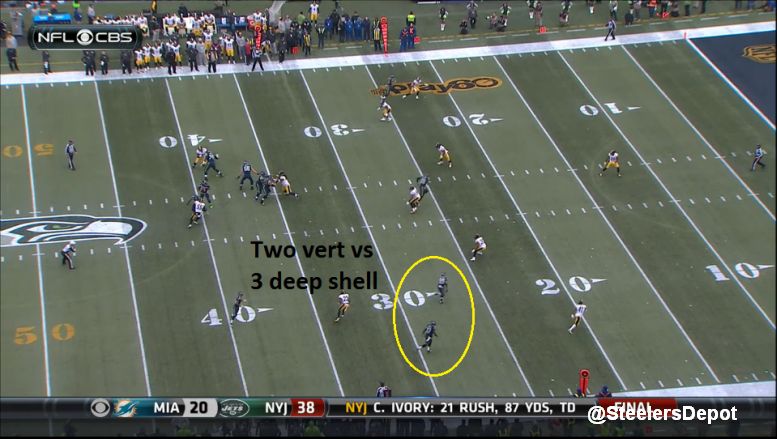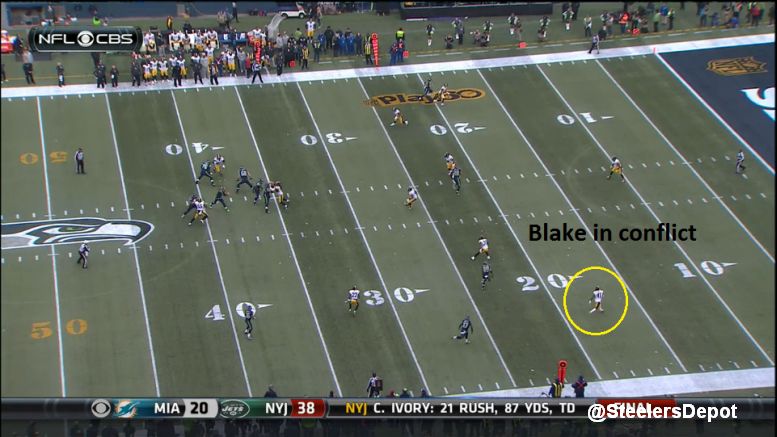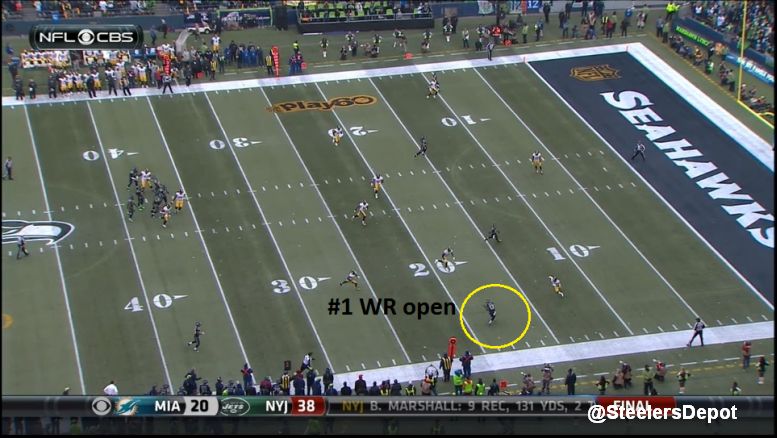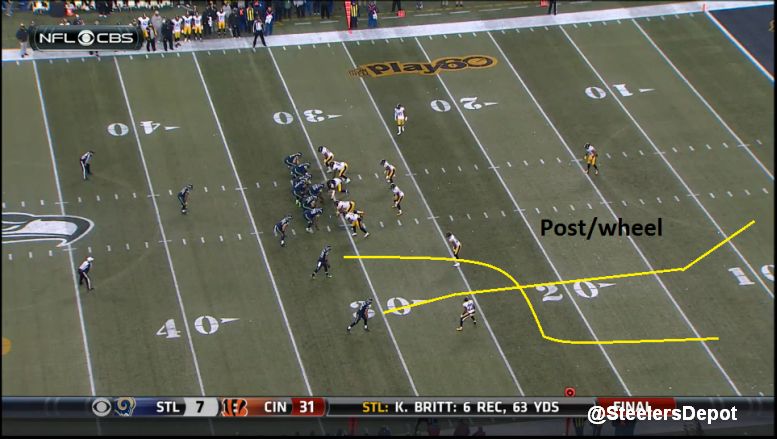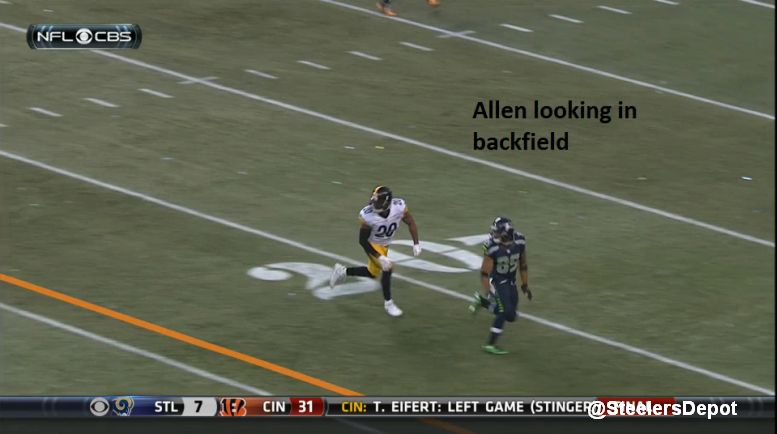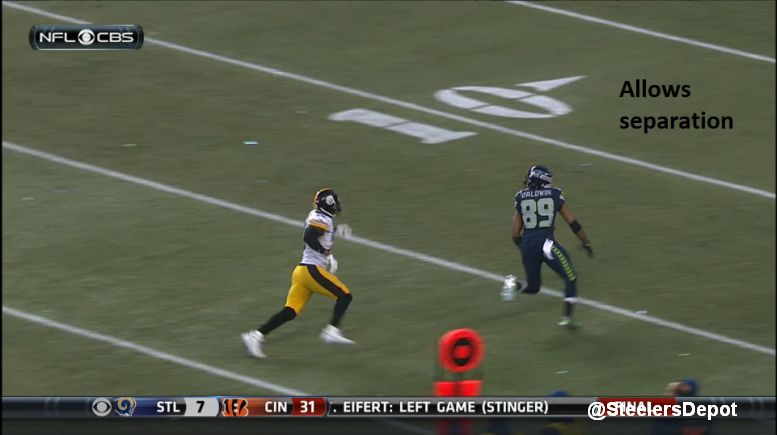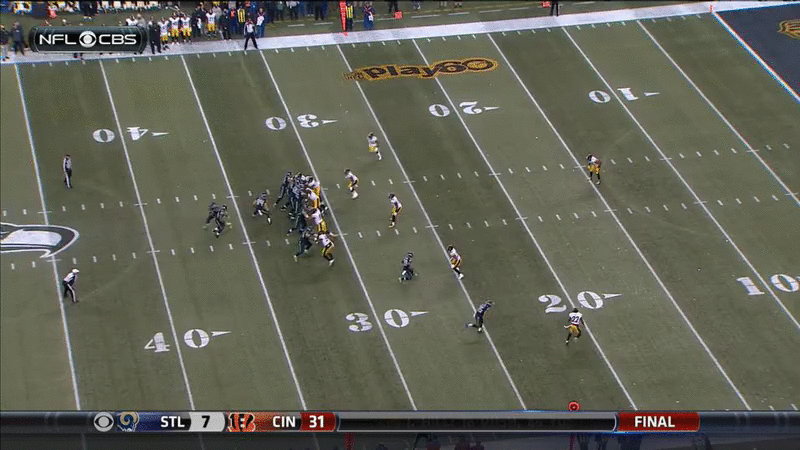If you read my stats of the weird article last night, you know that Russell Wilson had statistically one of the best games ever (ever!) against the Pittsburgh Steelers . That’s the what. But we desire to know the why. It doesn’t make me, or you, feel any better about it but at least it’s an answer.
Though there are always layers that go into poor defense, a large issue revolved around the Steelers’ scheme. If you follow us, you know they are a base Cover 3 team on early downs that morphs into a 2 Man scheme on third and long. That’s painting with a broad brush, but generally speaking, when you play the Steelers, that is what you are going to get. In their Cover 3, they are again, generally speaking, a spot drop zone coverage. That means they focus on landmarks instead of pattern matching and adjusting their coverage based on what the receivers do. They do pattern match occasionally, and we’ve pointed that out before, but overall, they spot drop.
I write all that for a specific reason. Arguably the biggest weakness against your basic Cover 3 team are four verticals. It’s simple math. Three deep defensive shell against four deep threats. This simple concept allowed a lot of big plays yesterday.
Our first example comes on Doug Baldwin’s 21 yard touchdown. What’s interesting here is this Cover 3 call comes on 3rd and goal. Usually on third and long, Keith Butler goes into 2 Man – a two deep shell with man coverage “trail technique” underneath. Not so here. The corners play the deep third with the safety in the deep middle. William Gay, the slot corner, is playing a hook zone.
To the trips side, we’re getting three verticals with #3 stemming inside to create a divide route, helping to ensure the safety stays on his landmark and the three receiver hook defender carries him.
With the Steelers spot dropping, instead of the hook player matching #2 vertical since #1 is vertical as well, it leaves Baldwin wide open down the seam.
There is no defender responsible for the seam here and it’s an easy touchdown.
We get a very similar look later in the game. This time, Seattle adds a wrinkle. It’s a 4×1 look with #3 getting width and running a swing route to draw the hook defender – again, nickel corner William Gay – downhill. And you get the same three vertical concept downfield.
Antwon Blake, probably recognizing the same concept, gets his eyes to #2, Baldwin. But he’s been put in conflict, the worst position for a defender to be in. Russell Wilson is simply going to read him and throw where he doesn’t drift to. Because Blake works to #2, Wilson fires it down the right sideline to #1, hitting Kevin Smith. Had Blake focused on #1, Baldwin again would have been open down the seam. It’s a lose-lose.
And finally, another 30 yard touchdown via Baldwin. It’s a 3×1 look though only two vertical concepts with the tight end running a hitch. Post/wheel combination with #2, Baldwin, running the wheel.
This is more of an individual breakdown than it is scheme, though this is still a Cover 3 look. Will Allen fails to carry Baldwin down the seam, getting greedy and looking into the backfield.
Philosophically, there is truly a clear divide in how the Steelers and Seahawks run their defense. They are both Cover 3 bases but the Seahawks run a ton of pattern matching, as we pointed out in our scouting report earlier in the week. They check to Mable or Skate coverage against 3×1 looks to help eliminate some of the woes that trips looks naturally present. As I wrote in the report, I really encourage you to check out James Light’s breakdowns of their coverage, which I’ll show and leave a link of this tweet from Light back in April.
It’s no coincidence the Seahawks had so much success on offense against the Steelers’ Cover 3. Because Seattle sees it so much in practice, and frankly, see more advanced concepts of it either on the field or in the film room, they know exactly how to beat it. Frankly, it’s just Keith Butler and company getting outcoached. That might be the first time that’s happened since Week One against the New England Patriots.

